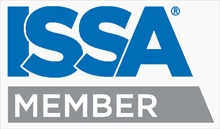GHS Focus: GHS Label Elements
In 2012, the U.S. adopted the Globally Harmonized System for the Classification and Labelling of Chemicals, or GHS for short.
GHS is designed to effectively communicate chemical hazards uniformly, so that each GHS label and SDS is set up similarly and easy to understand.
All of the compliance deadlines for GHS have passed, meaning that everyone should be in full compliance with GHS, and you should know how to read and understand a GHS label and SDS.
This GHS Focus will go a bit more in-depth into what is behind a GHS label and SDS’s, in terms of hazards, pictograms, and label elements. There are also some special cases you need to be aware of that may cause some confusion when trying to read a GHS label or SDS.
We will focus on those hazards that are most common to chemical cleaners.
Once a cleaning chemical’s hazards have been appropriately classified by GHS standards, we can create literature, labels, and SDS’s from this information.
GHS has created a system in which specific pictograms, hazard statements, and precautionary statements are required for use when a certain hazard classification is present. So once the classification is known, all of the rest of the relevant data can be generated using this system.
Note that if a chemical has more than one hazard (for example, a Category 1 skin corrosive and a Category 3 acute toxicant) then all pictograms, hazard statements, and precautionary statements must be included on the label and SDS.
By combining our knowledge of GHS hazards and pictograms with the label element requirements set forth by GHS, we can effectively create labels and SDS’s and understand them as well.
Although GHS is already in full compliance, taking the time to get to know what we are really dealing with can be very helpful in recognizing the potential risks of chemicals, leading to a safer workplace and environment.
Be sure to check out our previous blog posts on GHS Hazards and GHS pictograms.
For a more in-depth look at GHS, check out our GHS Technical Bulletin.
For help with GHS training, visit our GHS Training webpage.


